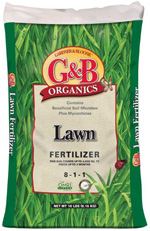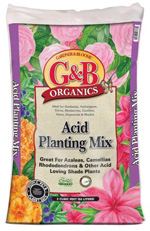|

     
|
 |
Featured Quote: "A weed is but an unloved flower." |
 |
 |
These days, not even a backyard garden is free from danger. The vegetables and flowers over which you've labored so lovingly are prey for aphids, cutworms, mealy bugs, and many others.Using chemical pesticides is so last century. We now know that broad spectrum conventional pesticides not only kill the bad bugs, they rub out the good ones as well. In fact, more and more insects are showing resistance to heavy duty chemical pesticides. In a controlled experiment, fruit flies were exposed to DDT. Not only did it not kill them, the fruit flies had developed a way to metabolize the pesticide and use it as food! Unfortunately, we've been finding out more and more that ingesting chemicals on the things that we eat can have a negative effect on us. We are what we eat. No matter how carefully you wash your vegetables that have been treated with chemicals, there is no guarantee that they don't still contain traces. Luckily, there are natural predators that help keep our gardens free of pests. We can fight bugs with bugs! Beneficial insects are nature's way of stabilizing pest populations. Take for example, the common green lacewing (Chrysoperla carnea). Actually, take the offspring of this "aphid lion"; the adult lays her eggs on the foliage, each on the top of hair-like filaments. In a few days, the lacewing eggs hatch and the tiny larvae emerge with their voracious appetites for aphids, spider mites and red mites, thrips, whiteflies, long-tailed mealy bugs, the eggs of leafhoppers, moths and leafminers, small caterpillars, beetle larvae and tobacco budworms. The larvae look like miniature alligators with tiny ice tong-like pincers that inject paralyzing venom. They then draw out the bodily fluids of their victim. It's not necessarily pretty, but they will help to keep your crops from being destroyed by these pests. Many gardeners will find these in their gardens already, but they have become a staple at many garden centers, where they are sold to be released in your garden. Green lacewing larvae can be released on numerous plants such as cotton, sweet corn, potatoes, tomatoes, peppers, eggplants, apples and strawberries. About 10 lacewing eggs per plant, or 1,000 eggs per 200 sq. ft. will control a moderate aphid population. During the two to three weeks in the larvae stage they will each devour up to 200 victims a week. After this, they pupate by spinning a cocoon with silken thread and approximately five days later the adults emerge to complete the life cycle. There are five or six overlapping generations each season. Since the larvae feed for about two weeks, a second release, two weeks later, might be necessary. Chrysoperla carnea, the "original" green lacewing just may prove to be the best all-purpose predator for your home garden. |
 |
Growing herbs in your garden is very rewarding, as a small plant can be used regularly to spice up whatever you're cooking. Thyme, rosemary, basil, and parsley are common in many gardens in the US, but one that is commonly forgotten and especially easy to grow is cilantro. As a young plant, cilantro makes a great addition to almost any southwest dish, whether it be in salsa, guacamole, tacos, rice, or salads, but is also featured frequently in many asian dishes. Its tanginess brings many dishes alive with the addition of a few small leaves. The leaves will be tastiest when the plant is young, so saving some in small plastic bags for later use can be a great idea. Later in its life, the cilantro plant will flower, attracting bees and eventually producing coriander, another valuable spice with flavors similar to citrus and sage. Coriander is used widely in curry, sausages, stews, pickles, and ratatouille, and goes for upwards of $8 a pound. Saving the seeds is easy. Once the plant has dried up with summer heat, just run the tops of the plant through your fingers and sift out the seeds. They're BB sized and shaped, so they're easy to pick out. Set these out to dry for a few days and put in a bottle or jar in your spice cabinet and grind a few up when you're ready to use it. Aside from its culinary uses, having cilantro around the garden will help attract ladybugs to your garden, and ladybugs eat aphids! Ladybugs will lay their eggs where their larvae will have plenty to eat, which is wherever aphids are plentiful. Having these beneficial insects in your garden will keep your plants happy, and help you avoid having to spray chemicals on your food. |
 |
|
Long valued for their profuse sprays of flowers from spring to early summer, coral bells (heucheras) are now also being valued for their bold, showy foliage. This genus of perennials has received a lot of attention from horticultural breeding programs in the last decade, and the result is an introduction of wonderful variations in foliage colors, leaf shapes, and flower colors. While most original coral bell selections produced light green early spring foliage which then matured to a darker green later in summer, newer varieties are now available in amber, bronze, burgundy, purple and ruby tones. Even the newest green-leafed varieties now come dressed up with silver veins, mottling or streaks. Many new cultivars also come with exquisite ruffled foliage. Using coral bells in the landscape provides a contrast to other plants, making your garden more interesting. Adding bronze, red, or purple foliage to the landscape brings out a new dimension of color. When these vibrant colors are placed next to green plants, your eye is drawn to the entire landscape--creating interest and depth. Most coral bells form evergreen mounds less than a foot high and across; the flowers appear 1-2' above the foliage. Even the flower colors have benefited from breeding programs and now come in shades of bright pink, coral, red, cream, and white. The flowers provide an extra benefit to the garden by attracting hummingbirds, butterflies and beneficial insects to the garden. The spent flowers are easy to remove; you need only tug gently from the base of the stem to remove them. While coral bells prefer partly shaded locations, these hardy plants can also tolerate full sun in milder summer regions of the U.S. They perform best in moist (but not wet) soils and need only a modest amount of feeding during the growing season. Don't neglect them completely though, because the nutrients in plant foods help bring out a deeper, darker more intense color in the foliage. Plant them in borders or in clusters of three or more, so that their sprays of blooms will have an even more dramatic effect in the garden. Coral bells also make great container plants because they don't have an aggressive root system. Coral bells are just what you need to add some flair to your garden. |
 |
|
William Cowper once wrote the now famous words, "Variety is the spice of life." This couldn't be truer in the garden. Nothing spices up a garden like plants with variegated foliage. Use too many and they'll make you dizzy. But placed in the background or strategically planted in the midst of the garden, variegated foliage can bring out the best in all of your plants. Variegated plants come in a myriad of shapes and shades. From bold to subtle, there's something for every gardener's personal tastes. If it's a tree you're looking for, nothing steals the show like the 'Flamingo' box elder. It can be the centerpiece to build your entire garden around. Many variegated plants make excellent hedges. Instead of hiding in the background, they provide a great starting point to planning a garden. Consider variegated English boxwood, 'Red Twig' dogwood, 'Gilt Edge' silverberry, euonymus, variegated English holly, variegated kohuhu, variegated mock orange, dappled willow or weigela. Many of these plants also look wonderful when planted individually to bring out a corner or become a focal point on a mound or garden island. If a hedge is not your cup of tea but you still want to hide some of your fence line, a variegated bower vine or variegated potato vine will do an excellent job. For bursts of color and interest throughout your garden, consider variegated varieties of abelias, daylilies, licorice plants, phlox, mock orange, sage, stonecrop, weigela, New Zealand flax and ornamental grasses. If your garden has shaded areas, don't worry. There are many great selections for areas with less sunlight. Many popular variegated plants prefer shade or partial shade. No matter what your garden setting is, variegated plants not only look great but also add interest. We have a large selection of plants with unique foliage and variegated colors. Stop by soon and see the beauty of these plants in person. You wont be able to resist them! |
 |
|
Can rain water "overwater" your plants?
Answer: It can if you have bad drainage or have plants close to a downspout. Most neighborhood properties are designed to allow water to drain away from the home, and if you have any type of slope at all your plants should be okay, barring a 30 day torrent of water. However, plants next to downspouts can suffer, so it is wise to add a downspout extension to steer water away from prized plants in areas where water might collect. It also helps to turn off your sprinklers on when it's raining... If you still face a bad drainage situation, consider re-landscaping that area with bog-loving plants. If you hate bog-loving plants, you could always sell your home. After all, what good is a home if you can't plant your favorite plants around it? |
 |
|
What You'll Need:
Directions:
Yield: 12 servings |
 click here for a printer friendly version of this page
click here for a printer friendly version of this page
 |
Written content © Garden Partners LLC, or respective authors. All Rights Reserved. Privacy Policy. All written content contained in this site is protected by United States copyright law and may not be reproduced, distributed, transmitted, displayed, published, or broadcast without prior written permission of Garden Partners, LLC. You may not alter or remove any trademark, copyright or other notice from copies of the content. |




